
香港大會堂紀念花園的初心-薪火相傳紀念保衛戰中犧牲的軍人和平民
- On August 26, 2021
- 0
在繁囂中環的核心地段,有一個紀念香港保衛戰的地方,每年開放12次,每次開放3小時,這就是香港大會堂紀念花園神龕。
1945年8月30日,夏慤帶領艦隊抵港,結束3年零8個月日佔時期,香港重光。1962年8月30日重光紀念日,香港大會堂紀念花園開幕啟用。查實當時香港已有和平紀念碑和西灣國殤軍人墳場,為何要特意再建一座戰爭紀念建築物?一切皆因港府及有關當局在考慮如何更全面地紀念1941年香港保衛戰抵禦日軍侵略的事蹟,而根據1962年開幕典禮的文件,我們可以更了解這個寧靜花園背後的初心。
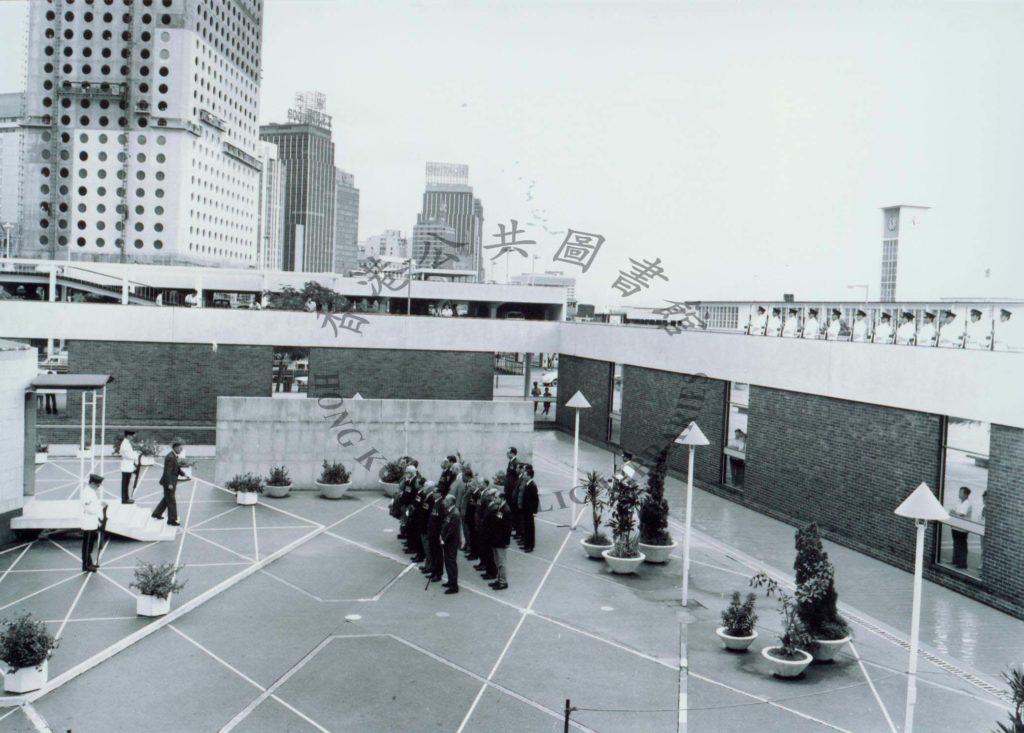
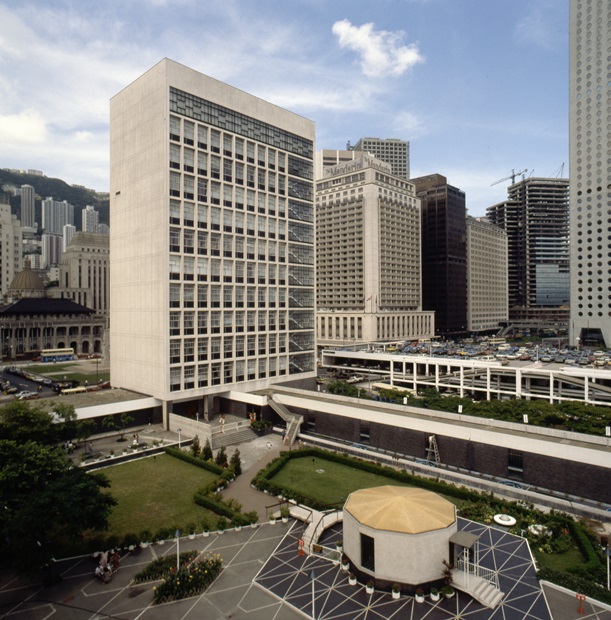
紀念不分種族、宗教、軍職或民間
戰後,香港義勇軍紀念基金(Hong Kong Volunteer Memorial Fund)委員會發現的問題是,儘管有不同的紀念活動及紀念品,但並無一樣事物足以流傳於後世,令往後不同種族及宗教的香港人都可以說「這是我們可以交予下一代的傳承,他們會對在香港保衛戰中犧牲的香港兒女引以為傲。」
委員會於是超脫了「興建一所義勇軍紀念建築物」這個起始目標,將紀念對象拓展至一切參與過香港保衞戰的人士,不論其是否執戈於軍旅,或從事於民防,均納入在計劃之中。大會堂紀念花園(Garden of Remembrance)旨在紀念所有爲香港而戰而壯烈犧牲之軍人和平民。花園開放供普羅大眾遊覽,以資景仰及憑弔。紀念花園亦設有兩道義勇軍紀念門(Volunteer Memorial Gates),鑲有雙龍軍徽,垂諸永紀。
It was simply that, although there might be memorials, both tangible and intangible, there was nothing of which the people of Hong Kong, irrespective of race or creed, could say “This is a heritage which we can pass on to future generations who may well be proud of their sons and daughters who laid down their lives in the defence of Hong Kong”.
…Here would be the two sets of Volunteer Memorial Gates, dedicated to the Volunteers, leading into a Garden of Remembrance dedicated to all those who had laid down their lives in the service of Hong Kong, irrespective of whether they had carried arms or not. This hallowed plot would be open to all, to enter, to revere and to meditate.
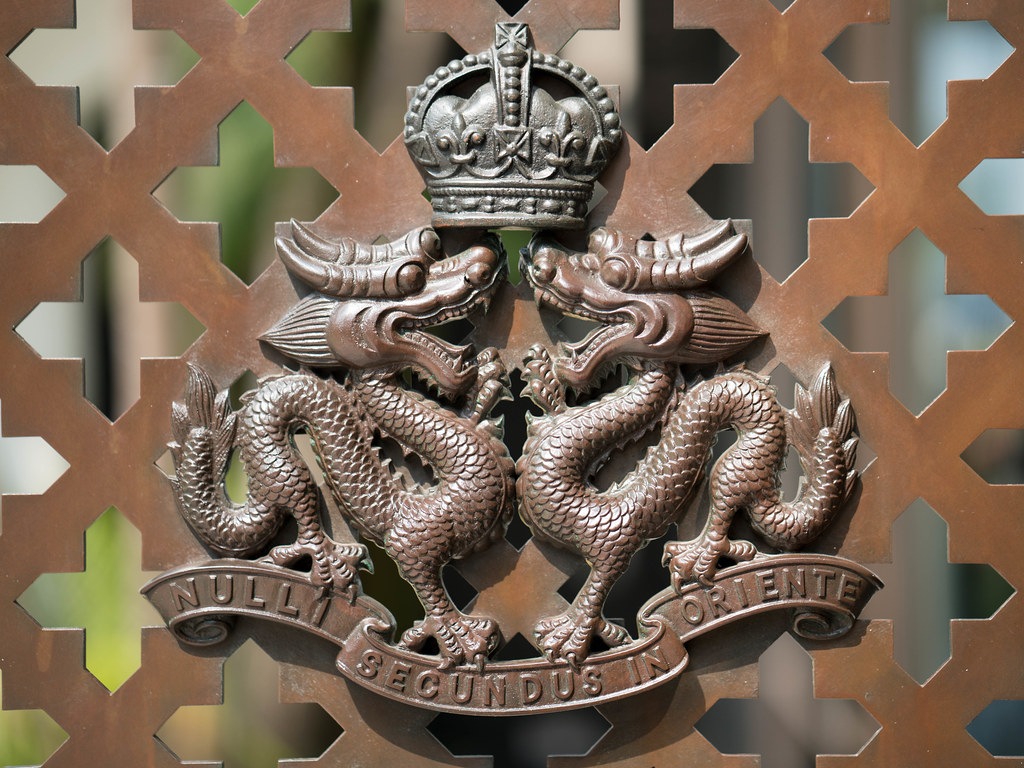
神龕設計匠心獨運 寓意烈士來自五湖四海
大會堂紀念花園中央設有一座十二邊形的神龕(The Shrine),以表示忠烈兒女並不獨來自香港本地。很多人從世界各地前來,本來與本港毫無關係,但與香港人並肩作戰。神龕牆上鑲有「英魂宛在,浩氣長存」八字及詩人羅拔布祿(Rupert Brooke)的名句:「These had seen movement and heard music; known slumber and waking; loved; gone proudly friended」。
In the centre of this sacred Garden, there would be a Shrine, a plain humble edifice with its wall pointing in all directions and to all parts of the world from whence had come not only Hong Kong’s loyal sons and daughters, but from whence had come all those, without any ties in the Colony, who had fought side by side with them.
神龕裏面放置了陣亡者名冊和鑄刻陣亡隊伍名字的木匾,紀錄了887位為港犧牲的本地軍民。為求資料準確,陣亡者名冊當年被張貼在天星小輪碼頭以及刊登在《南華早報》、《虎報》及《華僑日報》上,徵求公眾協助核對,《華僑日報》更在考證烈士中文姓名上貢獻良多。
名冊上,香港民防部隊(Hong Kong Civil Defence Corps)就緊隨聖約翰救護隊及船塢義勇軍其後,以下依次排列:輔助通訊隊、輔助營房隊、後備消防隊、輔助勞工隊、輔助補給隊、輔助醫療隊、輔助護士、輔助運輸隊、防空救護隊、英軍服務團及大批沒有隸屬任何一個組織的平民。
1962年8月30日重光紀念日,港督柏立基主持大會堂紀念花園神龕開幕儀式。委員會主席羅理基醫生(Dr. the Hon. Alberto Maria Rodrigues, O.B.E., E.D.)致詞:
「本港下一代之市民及來港訪問之人士進入神龕及看到名冊上名字時,將會自勉:彼等乃真正效忠本港之兒女,於離開神龕時,亦會謹記鐫在神龕上羅拔布祿之名句:彼等曾飽經細故,亦曾聆聽音樂,既曾在睡眠中,亦曾清醒,且受吾人所深愛,今雖逝,猶使吾人獲交而引以自傲。」
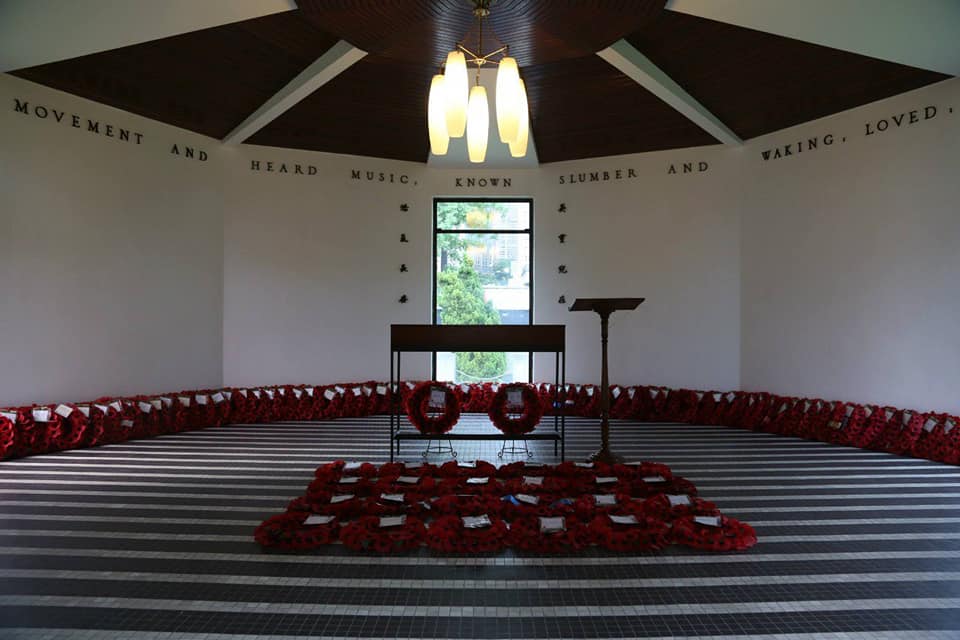
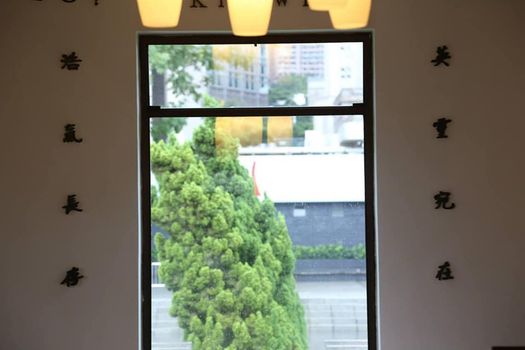
大會堂紀念花園今昔變化
1992年至1993年,香港大會堂紀念花園經歷大幅翻新,除了保留原來的長廊及神龕外,總體是由建築署馮永基團隊重新設計。2015年,馮永基撰文介紹設計概念:整體布局分為「靜態」的綠林區及「動態」的流動區,並以中軸線强化神龕的重要性。設計亦新增了一條在「英靈宛在,浩氣長存」鑲字背後向南伸延的水道,兩旁梯澗寓意把英魂引領到天堂。後來,由於有市民投訴只有一英呎水深的水道「濺濕腳部」,水道被逼填平改為花糟,改由水池圍繞神龕,由上而下引水淌流過鑲字背後。
1962年落成之初,香港大會堂紀念花園神龕逢星期一、三、五下午2時至4時開放予公眾。根據康文署資料,神龕現時每月第一個星期日上午9時30分至中午12時30分開放,一年合共開放12次。
今年是香港保衛戰80周年,如果你還記得8月30日重光紀念日這一天,可以按自己行程,花許少時間,在到紀念花園觀賞細味,到神龕獻花致意。9月5日,亦可進入神龕參觀。每人踏出一步,實徹紀念意義,這份記憶才會長存不滅。慎終追遠,民德歸厚。

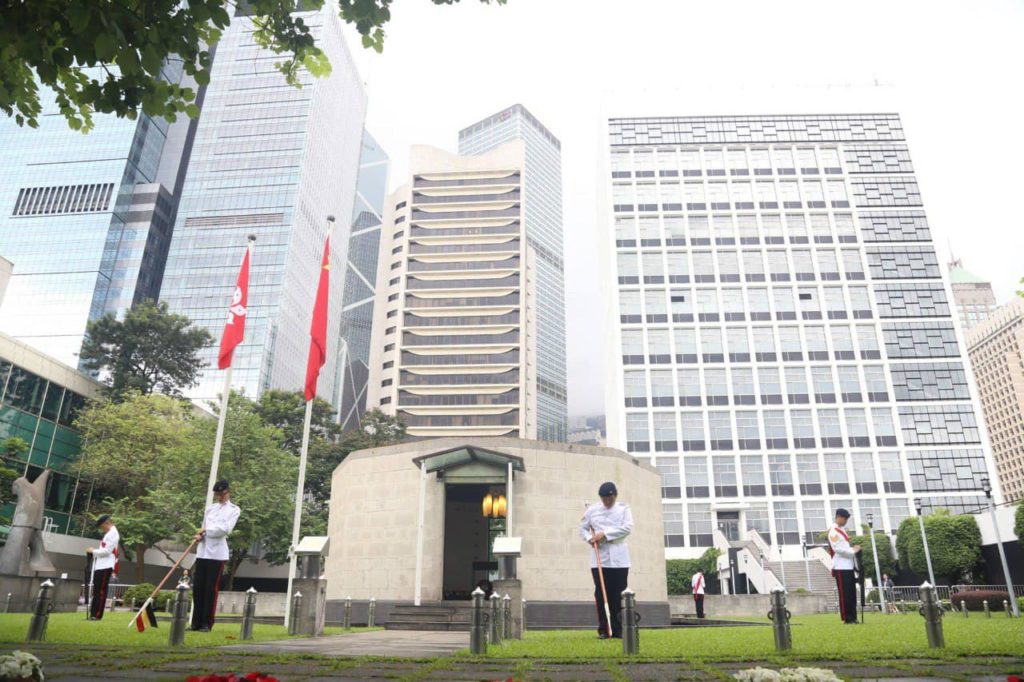

羅理基醫生小傳
羅理基醫生是葡裔香港人,於1911年生於香港,曾就讀聖若瑟書院。羅理基後來在香港大學讀醫,更獲得西洋會成員蘇亞雷斯(A.M.L. Soares)創立的奬學金。就讀港大期間,羅理基擔任大學板球隊隊長,帶領球隊在1932年聯賽奪冠。與此同時,羅理基亦是曲棍球隊隊長。1934年,羅理基從港大畢業,到海外進修三年後再回港私人執業。1940年,時年29歲的羅理基醫生在市政局選舉中當選,是當時最年輕的議員。
1941年香港保衛戰期間,羅理基醫生隸屬香港義勇防衛軍,擔任救護車隊中尉。香港淪陷後,他被囚禁在深水埗戰俘營,事後曾幽默地憶述自己與白德醫生共囚一室,他教白德醫生法語,生於俄國的白德醫生則教他說地道的俄語。戰後,羅理基醫生繼續在防衛軍擔任軍官,獲頒大英帝國員佐勳章M.B.E.(軍事)。
羅理基醫生亦歷任立法行政兩局議員,擔任多項公職。1962年,羅理基醫生除了主持了香港大會堂紀念花園計劃,同時是香港大學金禧誌慶籌備委員會的主席。為表揚他對香港社會的貢獻,他於1964年獲頒大英帝國司令勳章C.B.E.(民事),1971年則獲爵士勳銜。2006年,羅理基醫生在銅鑼灣聖保祿醫院與世長辭,享年95歲。

以下特別騰寫了1962年8月30日重光紀念日,香港大會堂紀念花園開幕典禮特刊的英文篇章:
Hong Kong’s Tribute To Her Glorious Dead
“These had seen movement and heard music; known slumber and waking, loved; gone proudly friended” – Rupert Brooke.
The war had been over for almost 10 years. Most people wanted to forget about the war and the suffering which followed in its trail, they said. There were so many “memorials”, in any case. Did we not have the Military Cemeteries, so beautiful in their isolation? And there were memorials commemorating various organizations which had taken part in the struggle for freedom in this part of the world. Then there was the Cenotaph. Was this not symbolic of all those who had laid down their lives for a cause, not only in the last war but in the Great War – all wars?
These were the arguments, the obstacles, which had to be overcome if an ideal, just conceived, was to be born and then grow to maturity. And what was this ideal, this dream? It was simply that, although there might be memorials, both tangible and intangible, there was nothing of which the people of Hong Kong, irrespective of race or creed, could say “This is a heritage which we can pass on to future generations who may well be proud of their sons and daughters who laid down their lives in the defence of Hong Kong”.
Just as fighting is associated with war, so was the idea fundamentally associated with Hong Kong’s own fighting forces – The Hong Kong Volunteer Defence Corps. This, then, was the foundation upon which to work. Before any progress could be made in the intended direction, many problems would have to be resolved. This was fully appreciated right at the outset. The idea of a Volunteer War Memorial was presented to the Volunteer authorities and received their blessing although it was fully appreciated that success was problematical. The project had now become official.
What form should this Memorial take? This was far too momentous a decision for one man, or even a small unrepresentative group of men, to take. A committee was formed, representing various interests, which spent many hours in discussion and in examining various proposals. It was very soon resolved that, whatever form the Memorial might eventually take, it must be without emphasis on race or religion. Any decision must also be influenced by the amount of money that could be raised. And this was an imponderable factor, the most weighty problem of all.
After due consideration, the Committee decided to take the various problems to the highest authority, the Governor, Sir Alexander Grantham. The whole idea was received with greater sympathy than could have been reasonably anticipated and the Chairman left Government House with so much encouragement that it was decided to proceed, at once, with collection of funds.
This optimism was based on the fact that the Committee had been privileged by being given a preview of the plans, then in the embryonic stage, of the proposed new City Hall. It had also been given the promise that facilities would somehow be provided for the erection of Volunteer Memorial Gates and a Garden of Remembrance.
Apart from radio broadcasts in various languages, appeals were sent out to business houses in the Colony, to residents and also to former residents and Volunteers who had long since left Hong Kong. Donations started to flow in, not only from Hong Kong but from many parts of the world. It was most gratifying to the Committee. Two major problems had been successfully resolved but there were many more to be overcome.
While, primarily, the main purpose had been to erect a Volunteer Memorial, it soon became apparent that, if the Memorial was to fulfil its rightful function, it would have to encompass the efforts of all those who had played their part in the defence of Hong Kong, whether they were in the actual armed forces or engaged in the various forms of Civil Defence.
It was found necessary to review the overall plan and the Committee made its decision. Technical guidance was essential but this would encroach on the funds which were so badly needed for the scheme. Sir Alexander Grantham again came to the rescue and graciously arranged for the services of Mr. A.M.J. Wright, the then Chief Architect of the Public Works Department, to be co-opted on to the Committee. This gentleman, together with Mr. H.J. Tebbutt, a well-known architect and also a Volunteer, commenced the difficult task of interpreting the ideas of laymen. Very soon, the scheme began to take shape. Here would be the two sets of Volunteer Memorial Gates, dedicated to the Volunteers, leading into a Garden of Remembrance dedicated to all those who had laid down their lives in the service of Hong Kong, irrespective of whether they had carried arms or not. This hallowed plot would be open to all, to enter, to revere and to meditate.
In the centre of this sacred Garden, there would be a Shrine, a plain humble edifice with its wall pointing in all directions and to all parts of the world from whence had come not only Hong Kong’s loyal sons and daughters, but from whence had come all those, without any ties in the Colony, who had fought side by side with them. Inside the Shrine, there would be a place on its walls for commemorative plaques which would record, for all to see, the various units and formations which had taken part in the defence of Hong Kong.
And, finally, there would be a Roll of Honour, recording the names of our dead. The preparation of this Roll represented a task of the first magnitude as it was so essential that it should be fully comprehensive and accurate. A complete check had to be made of all available records covering the Hong Kong Volunteer Defence Corps and all of the other organizations. A preliminary list was thus compiled which was thoroughly cross-checked with the records at the Sai Wan, Stanley and other Cemeteries. It was felt that even this approach was not adequate for the accuracy desired and the lists were again submitted to the various organizations. These lists were not only displayed at the various Star Ferry piers but were also sent to “South China Morning Post”, the “Tiger Standard” and to the Wah Kiu Yat Po”. These papers very kindly arranged for the publication of the lists and the public were asked to assist in verification. And no official list of names, in Chinese, was available, the “Wah Kiu Yat Po” undertook the onerous tasks of a complete translation.
All of the above information which had been accumulated, had to be carefully co-ordinated and Lt. Col. Michael Jennings, Deputy Commandant of the Royal Hong Kong Defence Force, played no small part in the compilation of the final Roll of Honours as it appears today. Even with all the care that has been taken, it is still possible that there may be errors and omissions and, for this reason, a provision Roll of Honour will be available in the Shrine so that the Public may examine it and draw the attention of the Committee to any errors which may have occurred. After the passage of a year, it is felt that the Roll should be considered as accurate and it will be printed in its final form.
It has taken many years for the infant idea to grow to full maturity – years of impatience with the slow progress, frustration and, on occasions, apprehension to many. It is very difficult to describe the feelings of those, responsible for the project when, ultimately, a scale model of the whole City Hall Scheme, incorporating their ideal, became available. What we see today is the result of much planning, the close co-operation of the Government and the generosity of the people of Hong Kong. All this, and the dedication of a small group of citizens with a clearly defined concept of the responsibility to future generations.
Here, then, is Hong Kong’s tribute to her glorious dead!
參考資料:
http://www.clublusitano.com/history-2/
https://hk.coastaldefence.museum/zh_TW/web/mcd/feature-article-on-field-ambulance.html
http://www.etnet.com.hk/www/tc/diva/art/raymondfung/30016
延伸閱讀:
———————————————
FB: https://www.facebook.com/WatershedHK
IG: https://www.instagram.com/hkwatershed
MeWe: https://mewe.com/p/watershedhongkong
Web: https://www.watershedhk.com/
█ 支持WatershedHK運作以及尊屬分享:
Patreon: https://www.patreon.com/WatershedHK
